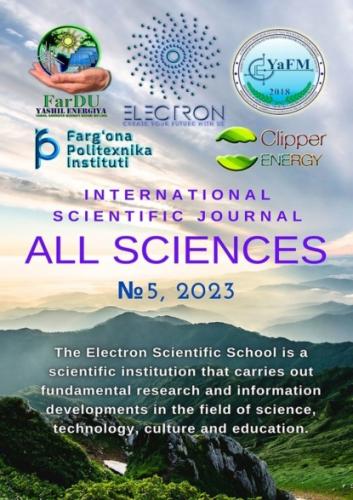7. Livanov, M. N. Some problems of the effect of ionizing radiation on the nervous system: monograph / M. N. Livanov. – M.: State Publishing House of Medical Literature, 2013. – 196 p.
8. Nadareishvili, K. Sh. Questions of the influence of ionizing radiation on the cardiovascular system / K. Sh. Nadareishvili. – M.: Metsniereba, 2011. – 300 p.
9. Nikolay, Daineko und Sergey Timofeev Radiation and medicinal plants / Nikolay Daineko und Sergey Timofeev. – M.: LAP Lambert Academic Publishing, 2014. – 156 p.
10. Pobedinsky, M. N. Methods of examination of the function of the genital glands in women working with sources of ionizing radiation / M. N. Pobedinsky. – M.: State Publishing House of Medical Literature, 2014. – 28 p.
11. Smirnova, O. A. Radiation and the mammalian organism. Model approach: monogr. / O. A. Smirnova. – M.: SIC "Regular and chaotic dynamics", Institute of Computer Research, 2010. – 224 p.
12. Teldeshi, Yu. Radiation – threat or hope / Yu. Teldeshi, M. Kenda. – M.: Mir, 2011. – 415 p.
13. Hall, J. Radiation and life / J. Hall. – L.: Medicine, 2014. – 256 p.
14. Shlyakhov, V. Investigation of the balance of long-wave radiation in the troposphere: monograph / V. Shlyakhov. – M.: Hydrometeorological Publishing House, 2014. – 82 p.
15. Shubik, V. M. Life with radiation. Book 1. Peaceful atom: benefit – harm: monogr. / V. M. Shubik. – M.: SINTEG, 2011. – 212 p.
TECHNICAL SCIENCES
ALARM SENSOR FOR GEOTHERMAL ENERGY FACILITIES
UDC 620.97
Qo’ldashov Obbozjon Xokimovich
Doctor of Physical and Mathematical Sciences, Professor of the Scientific Research Institute "Physics of Semiconductors and Microelectronics" at the National University of Uzbekistan
Scientific Research Institute "Physics of Semiconductors and Microelectronics" at the National University of Uzbekistan
Komilov Abdullajon Odiljonovich
Assistant of the Fergana branch of the Tashkent University of Information Technologies
Ferghana Branch of Tashkent University of Information Technologies
Jumaev Javohir Abdurasulovich
2nd year student of the Department of 13.03.02 "Electric power and electrical engineering" of the Tashkent branch of the Moscow Power Engineering Institute
Tashkent Branch of the Moscow Power Engineering Institute
Annotation. Over the past decades, there has been an increased interest in alternative sources of renewable energy in nature: solar, geothermal, wind, etc. It should be noted that this interest is caused not only because of the annual increase in prices for traditional fuels (oil, coal, gas) and forecast data on the depletion of their reserves in the foreseeable future. It is also caused by the need to address issues of environmental protection from pollution and possible man-made disasters. For these reasons, many countries around the world are focused on a rational combination of traditional energy sources with renewable ones. At the same time, among renewable energy sources, the deep heat of the Earth occupies not the last place. It is enough to name countries such as Iceland, the Philippines, New Zealand, Indonesia, the USA, Italy, etc., where there are enormous thermal resources lying in relatively shallow layers of the earth’s crust.
Keywords: sensors, alarm system, geothermal energy, alternative sources of renewable and natural energy.
Аннотация. За последние десятилетия в мире возрос интерес к альтернативным источникам возобновляемой в природе энергии: солнечной, геотермальной, ветровой и др. Надо отметить, что этот интерес вызван не только из-за ежегодного роста цен на традиционные виды топлива (нефть, уголь, газ) и прогнозных данных по истощению в обозримом будущем их запасов. Он вызван также необходимостью решения вопросов защиты окружающей среды от загрязнения и возможных техногенных катастроф. По этим причинам во многих странах мира ориентируются на рациональное сочетание традиционных источников энергии с возобновляемыми. При этом среди возобновляемых источников энергии глубинное тепло Земли занимает не последнее место. Достаточно назвать такие страны, как Исландия, Филиппины, Новая Зеландия, Индонезия, США, Италия и др., где имеются колоссальные тепловые ресурсы, залегающие в сравнительно неглубоких пластах земной коры.
Ключевые слова: датчики, аварийная сигнализация, геотермальная энергетика, альтернативные источники возобновляемой и природной энергии.
Today, geothermal energy is actively developing in Uzbekistan. On the territory of Uzbekistan, forecast geothermal resources at accessible depths (up to 5-6 km) are 4-6 times higher than hydrocarbon resources. The main consumers of geothermal resources in the near and long term in Uzbekistan will undoubtedly be heat supply and, to a much lesser extent, electricity generation.
However, geothermal energy is not without drawbacks, as it is known that dangerous gases are released at geothermal wells, and therefore the control of these gases is relevant for the development and search for new sources of geothermal waters. When using these waters in the equipment of geothermal systems, deposits are observed, mainly of the poorly soluble salt CaCO3, in this regard, the control of the gas composition is relevant for their development and the search for new sources of geothermal waters [6-7].
Depending on the conditions of formation, as well as the chemical and gas composition, geothermal waters are divided into carbon dioxide, hydrogen sulfide, nitrogen, hydrogen sulfide-carbon dioxide, nitrogen-carbon dioxide, methane and nitrogen-methane. Geothermal waters of the Fergana Valley are classified as methane.
The presence on the territory of Uzbekistan of a large potential of resources of hydrothermal deposits with a gas factor requires the development of new technical and technological solutions for their effective use.
Exposure to geothermal gases, mainly methane, can occur at workplaces during emergency releases of geothermal fluid and maintenance work in a confined space, for example, inside pipelines, turbines and condensers. The severity of the risk of methane exposure may vary depending on the location
